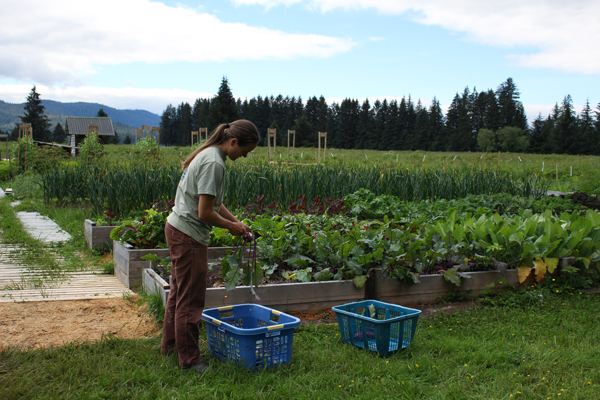
It’s peak season for farmer’s markets across the country right now. Food is typically grown in a rural setting. But one Southeast Alaskan couple is taking that to the extreme. They live in a completely off-the-grid location in a place without cell phone coverage or roads. And they have to be inventive to get the produce to market.
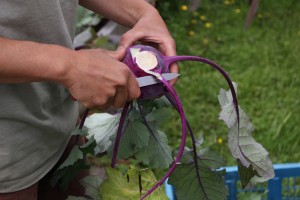
Farragut Bay is more than just a little off the beaten path from Petersburg. It takes about an hour to get there in a skiff. The boat cruises into shallow water, passing a sailboat catamaran that Farragut Farms uses to transport up to 1,000 pounds of vegetables every other week. But the trip’s not over yet. Bo Varsano and Marja Smets homestead is still a fifteen minute hike through spongy marsh.
Varsano has lived on the property for about 20 years. The electricity runs entirely off solar panels. There’s no sewer system or running water. They have a rain catchment for bathing, doing dishes, and watering plants. And that’s how they like it.
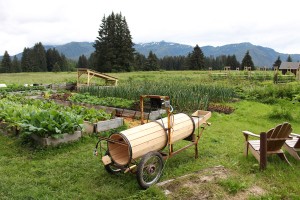
“Yeah, I definitely fell in love with the place before I fell in love with him,” Smets jokes.
The couple uses about two acres to grow food, mostly in raised garden beds and greenhouses. Varsano lived here first, but he says he didn’t think about the property for commercial farming.
“It was probably more Marja’s idea than mine. I think I was more aware of how much work it was than she was, but it was a mutual decision.”
That was five years ago. Now, Farragut Farms supplies their produce to the Petersburg farmers market, grocery store, school cafeteria, and a local restaurant.
It’s the eve of the market, so Varsano and Smets are getting everything together for the next day: kale, chard, carrots, and kohlrabi. It’s a lot of work for two people.
They have to package the produce, put it in coolers, and row it down a side slough to their sailboat.
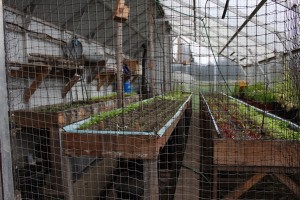
“Most people think we’re pretty crazy, I suppose,” Smets laughs.
They are part of a growing number of local farmers in Southeast Alaska. The couple transports their produce 30 miles to Petersburg. In a sail boat, it’s a long trip, but the bulk of grocery store products travel thousands of miles to the region. The Petersburg Economic Council recently applied for a $25,000 grant from the USDA to fund farmer’s market promotions. Liz Cabrera, the coordinator for the PEDC, said she looks at it as growing one small business at a time.
“It adds an element of economic diversity to our local economy,” she said. “It also adds, in general, an increased sense of resilience where we’re not as dependent on something being brought in from down south.”
Part of the grant money, if awarded, would go toward hiring a part-time market organizer and developing a Southeast Alaska Growers conference in Petersburg. As it stands, there are no formal networking opportunities to discuss the challenges farmers face in the region. Bo Varsano loves the idea, and he says there are plenty of interesting challenges.
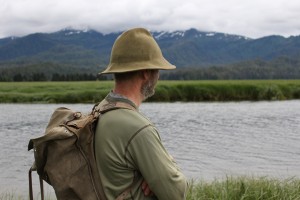
“We’re kind of in a unique position of there’s just two of us and we’re remote enough,” Varsano said. “We can’t hire anybody; we have to get creative.”
That’s meant designing a greenhouse on wheels and a gate to keep the moose out, even inventing vessels to transport the goods. Marja Smets hopes by sharing this information, the local foods movement will continue to thrive.
“We feel like the best way to learn and improve is to learn and talk to others about what they’re doing,” Smets said. “We’re not alone.”
The couple finishes packing the rest of the kohlrabi for the farmer’s market.
To make it on time, they’re leaving on their catamaran sailboat at midnight. The trip can take up to four hours with their smaller boat engine. Varsano said they sometimes complain about the lifestyle, but the remote beauty of the landscape makes up for the difficulty.
“It’s pretty easy to kind of invent your own life here.”



